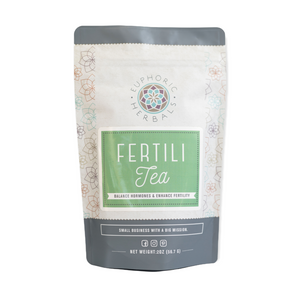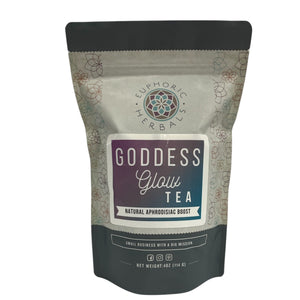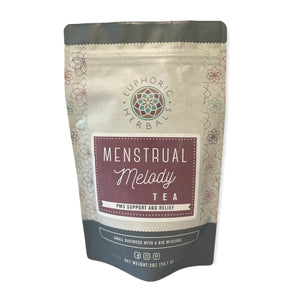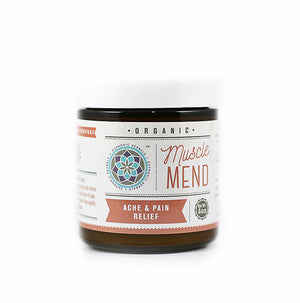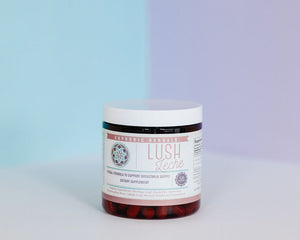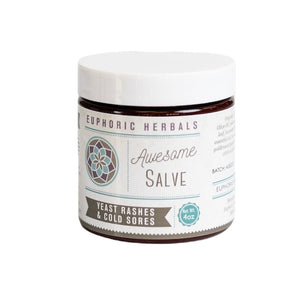There are many different ways to take herbs- more than most people realize.
You can make a simple herbal infusion (more commonly called herbal tea), an herbal extract with or without alcohol, an herbal salve for external use, and the list goes on.
One method that often gets overlooked is an herbal oxymel. Oxymels have been used since at least 400 BC (the time of Hippocrates) and are incredibly simple to make. All you need is vinegar, honey, and the herb(s) of your choice.
Here's more about what an herbal oxymel is and how to make your first one.
What is an Oxymel?
The word 'oxymel' is derived from a Greek word that translates to 'acid and honey'. It's a simple herbal preparation that uses vinegar (the acid) and raw honey to extract the beneficial properties of certain herbs.
While there isn't necessarily a specification for type of vinegar, most herbalists use raw apple cider vinegar to make an oxymel because it has its own health-boosting properties. Using raw (rather than pasteurized) honey is also important because it will have natural antimicrobial properties and live beneficial enzymes.
Though many different herbs can be used to make an oxymel, one of the most well-known examples of this herbal preparation is fire cider, a potent tonic made with spicy herbs and apple cider vinegar with raw honey added at the end.
Benefits of Herbal Oxymels

So why would you want to use an oxymel instead of an infusion, tincture, etc.?
There are many benefits to herbal oxymels, but one of the biggest is flavor. Because of the addition of raw honey, the end result is a sweet and almost syrup-like concoction. This is why oxymels have traditionally been used for less palatable or extremely pungent herbs like garlic, cayenne, and various bitter herbs.
Oxymels are also alcohol-free for those who can't or don't want to take tinctures containing alcohol. In spite of this, they are still very shelf-stable, lasting for 6-12 months and sometimes longer.
Though you can take an oxymel any time of the year, they have most often been used for immune health, digestion, and respiratory support.
The combination of vinegar and honey lends itself to soothing coughs, colds, and sore throats, particularly when supportive herbs are added. Raw apple cider vinegar contains enzymes and bacteria that aid digestion, and this benefit is multiplied with the addition of digestive herbs.
A final benefit is that an oxymel utilizes cold extraction.
Every type of extraction will pull a slightly different variety and strength of compounds from plant material. As an example, vitamin C is a very heat-sensitive nutrient that tends to be destroyed when heat is used on herbs.
Because an oxymel doesn't use heat, you can make a preparation rich in vitamin C (using rosehips, for example) to take through cold and flu season.
An Important Precaution
Children may be drawn to oxymels because of their sweetness (if they don't mind the sourness of the vinegar). However, remember to never give an oxymel to children under 12 months, since it contains raw honey.
Traditional Herbal Oxymel Recipe

There are several ways you can make an oxymel, but the most traditional method is to simply combine the vinegar, honey, and herbs in a jar and let them infuse for weeks.
The exact ratio of vinegar to honey is entirely up to you. In times past, herbalists used five parts of honey and only one part of vinegar, which made an incredibly sweet preparation! Today, most use a 1:1 or 2:1 ratio of honey to vinegar, so feel free to adjust according to your taste buds.
Ingredients:
- Dried herbs of choice (suggestions at the end of this article)
- Raw honey (1-2 parts)
- Raw apple cider vinegar (1 part)
Instructions:
- Fill a pint jar about 1/4 of the way full with the dried herbs of your choice. (For very "fluffy" herbs, you may wish to fill the jar 1/2 full.)
- Pour the honey and apple cider vinegar over the herbs in the ratio of your choosing. (For a 1:1 ratio, use about 3/4 cup of honey and 3/4 cup of vinegar.)
- Stir carefully to fully incorporate the herbs, vinegar, and honey. Be sure that the herbs are fully submerged below the liquid.
- Tightly cap the jar with a plastic lid or a metal ring with parchment paper underneath (to keep the vinegar from eating through the metal). Store in a cool, dark place.
- Let the herbs infuse for 2-4 weeks, shaking the jar at least once a week to make sure everything is mixing together.
- At the end of the infusion period, strain out the herbs and store your oxymel in a clean glass container. Store in a cool, dark location for up to 6 months.
Vinegar Infusion or Decoction Method
This is a second way to make an oxymel and the one most frequently used to make fire cider. The main difference between it and the traditional method is that you infuse the herbs into vinegar only and add the honey at the end.
In general, use a vinegar infusion (no heat) for leaves, flowers, and other 'delicate' plant parts. Use a vinegar decoction for roots, bark, berries, and other 'hard' herbs.
Ingredients:
- Dried herbs of your choice
- Raw apple cider vinegar (8 cups for a decoction)
- Raw honey to taste
Instructions:
- For an infusion, follow the instructions for making a traditional oxymel, except fill the pint jar with only vinegar. Once your herbs have infused and been strained out, add an amount of honey equal to the infused vinegar.
- For a decoction, place your herbs in a saucepan and add about 8 cups of vinegar (or twice as much as you want to end up with). Bring to a boil.
- Reduce the heat and simmer gently until the liquid in the pan is reduced by about half. This should take around 30-40 minutes.
- Strain out the herbs, and allow the vinegar to cool until it is warm but not hot. Stir in raw honey to taste. (For a 1:1 ratio, add in an amount of honey equal to the vinegar left in the pan.)
- Pour the oxymel into a clean glass container and store somewhere cool and dark for up to 6 months.
Tips for Making an Herbal Oxymel

As you can see, making an herbal oxymel isn't difficult- it just takes a little patience. But here are a few tips that will help you out as you explore this ancient preparation:
- If you would like, you can also infuse the vinegar and honey separately and then combine them. For example, lavender-infused honey could be combined with thyme-infused vinegar to make an oxymel.
- Always use clean and dry glass jars. The presence of even a drop of water can spoil your oxymel.
- Some herbalists prefer to store their oxymel in the refrigerator. It will have a thicker texture if you choose this option but may last longer.
- Don't use fresh herbs unless you have experience with them. They still contain moisture that may ruin your oxymel if not handled correctly.
- Experiment with different types of honey (wildflower, clover, etc.) for a slightly different flavor. However, always use a honey that is liquid, or you'll have a very hard time trying to strain out your herbs!
How to Take an Oxymel
If you don't mind the potency of apple cider vinegar, you can take your oxymel by the spoonful as needed. Or you can add a teaspoon or two to hot water to make an instant 'herbal tea'. Depending on the flavor of your oxymel, it can also go into an herbal infusion as long as the herbs all work together.
Particularly during the summer, a great way to use an oxymel is to add a few spoonfuls to sparkling mineral water to make a highly refreshing drink. (This is particularly good if you use something like elderberries or rosehips to make the oxymel.)
For a more culinary approach, you can also use an oxymel to make a salad dressing or as a topping for pancakes, ice cream, etc.
Herbs to Try in Your Oxymel
Most herbs can be used to make an oxymel, although some are better off in a hot infusion, alcohol tincture, etc. Here are some ideas to get you started:
- Garlic
- Ginger
- Rosehips
- Elderberries
- Elderflowers
- Thyme
- Sage
- Basil (including holy basil)
- Nettle
- Hyssop
- Oregano
- Rosemary
- Lemon balm
- Bee balm
- Mullein
- Lemon or orange peel
Remember, the idea is to make an oxymel with herbs that offer the kind of support your body needs, although you can also experiment with making some just for flavor alone!
Disclaimer: This post is for informational purposes only. It does not constitute medical advice and should not be substituted for medical advice. Please consult your health care provider, herbalist, midwife, or naturopathic physician before taking herbs, supplements, etc. Here's the link to our full disclaimer.






















































